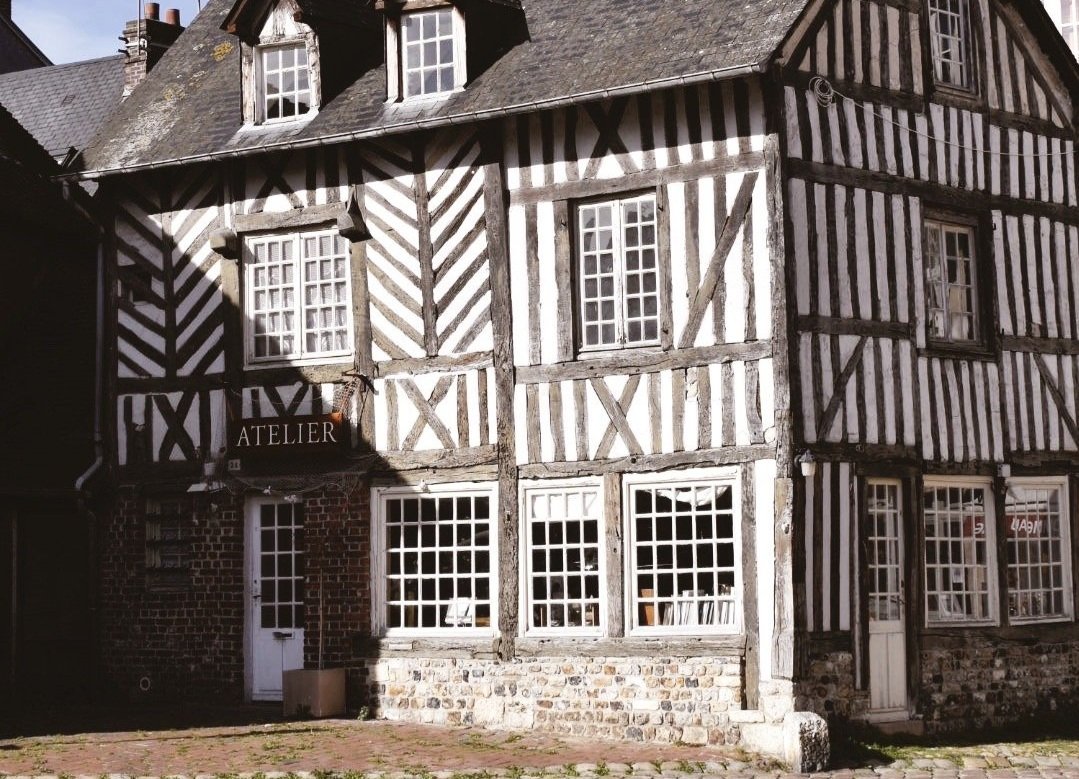
Katy Rose Collection: Art, Words
Painting in France & Delightful Supplies
Impressionism
Bonjour! The way I often describe this style of painting to my children or the ladies in my art class is this:
Before the invention of the camera, it was important for paintings to be much more realistic, almost like record-keeping. Painstaking detail was used with great technical skill. With the invention of the camera, artists began branching out a bit into new ways of expression. This was, of course, met with much opposition at first and the art of people like Claude Monet was considered bad and unappealing. But Monet liked what he created and kept at it, basically inventing a style that was not realistic, but gave the “impression” of the scene he wanted to convey. His style was loose and free.
Early on, I created much more realistic art, but I’ve grown over the years to really prefer Impressionism. It’s unique to the artist, stylized, and forgiving.
These are the reasons I love to create this style with my children, and with the women who are new to art in my class.
While it’s a bit more “free” than realism, it still works within boundaries, with attention to perspective, light, color, and contrast.
Monet painting from the streets of Honfleur
Honfleur, France
My husband and I traveled last fall with our friends to this dream-like coastal village of Honfleur, where Monet came to do much of his painting, along with many other Impressionism painters.
From the Normandy tourism website:
“Honfleur’s beauty has long attracted artists, with works of art to be found in the town’s many museums and galleries. Honfleur takes particular pride in its Impressionist roots – Claude Monet’s mentor Eugène Boudin was born in the town, and Monet and his contemporaries would often set up their easels at the Ferme Saint-Siméon on the hill above Honfleur, to capture the beautiful light of the Seine estuary.”
What an idyllic place.
Wouldn’t it be amazing to take an outdoor painting class in this spot with so much art history?
A few Art supplies I love for travel
This Moleskin notebook for sketches and journaling (love the pocket for postcards and mementos)
This Strathmore notebook for painting (gorgeous quality)
A pen holder for your journal (love these!)
Water pens for watercolors
Watercolor Paints, the most basic child’s set will work great, or try something fun like THIS.
Pencils
Ink pen (what I use for my sketches!)
This portable photo printer for a couple daily print-outs!
Washi Tape in colors I love to tape in paper memories
post contains Amazon Affiliate links
Come, Thou Fount of Every Blessing
Come, Thou Fount of Every Blessing
By Robert Robinson
Norfolk, England
1758
After young Robert’s father died, his mother had trouble controlling his unruly ways. She sent him as a teen to London so he could learn to be a barber, but drinking and gang-life consumed him. Then, one night, after feeling uneasy about seeing a fortune teller, he stumbled in to hear a preacher. He quickly sobered up as the preacher talked about sin and grace, and soon after surrendered his life to Christ. He became a minister, sometimes writing hymns to go along with his sermons. That is how Come, Thou Fount of Every Blessing came to be, his prayer for God’s mercy to flood our hearts, enabling us to forever sing His praise.
Information drawn from “Then Sings My Soul” by Robert J. Morgan
A Dream to Fix the Problems
There was once a boy named Fred with a secret dream to be a lawyer. They were people who helped fix problems, he heard, and his southern town had lots of problems. He kept his dream to himself because young boys with his color skin in the 1930s never grew up to be lawyers. But his mother, a widow who cleaned houses, taught her five children they could be anything if they did three things: keep Christ first, stay in school, and stay out of trouble.
So Fred worked hard to earn his law degree, even traveling to a faraway state where a school would accept him despite his skin color. Fresh out of law school and back home, he got a call one Friday afternoon. It was Rosa Parks. That morning she had been arrested for her quiet protest – refusing to move to the back of the bus because of her skin color, and she asked 24-year-old Fred to be her lawyer. All weekend he sat in a living room with a few friends plotting out what had to happen surrounding the trial and, from that, the Montgomery Bus Boycott took shape. They needed a leader to help motivate the African American community in town and someone in the living room suggested their Reverend, a young man named Martin. He could move people with his words, they said. Mrs. Parks’ trial commenced Monday along with the planned bus boycott, which lasted not one day, but 388. The young Reverend, Martin Luther King Jr., motivated the people while Fred provided the legal guidance.
Photo from Bus Ride to Justice by Fred D. Gray
Fred kept helping and working and asking God how he should handle each trial that came his way. After Rosa Parks’ trial, his cases included the Tuskegee Syphilis Study, the Desegregation of Alabama Schools, and 1965 Selma March. He worked beside Dr. Martin Luther King Jr.’s till the very end, which in many ways was just the beginning for so much change was needed, and as Fred says at 93 years old, is still needed.
Today he’s still working in his southern town to help fix problems. To hear him speak this past weekend was quite a privilege, as he generously offered a glimpse of all that was required behind the scenes to move the needle of progress little by little.
Photo from Bus Ride to Justice by Fred D. Gray


















